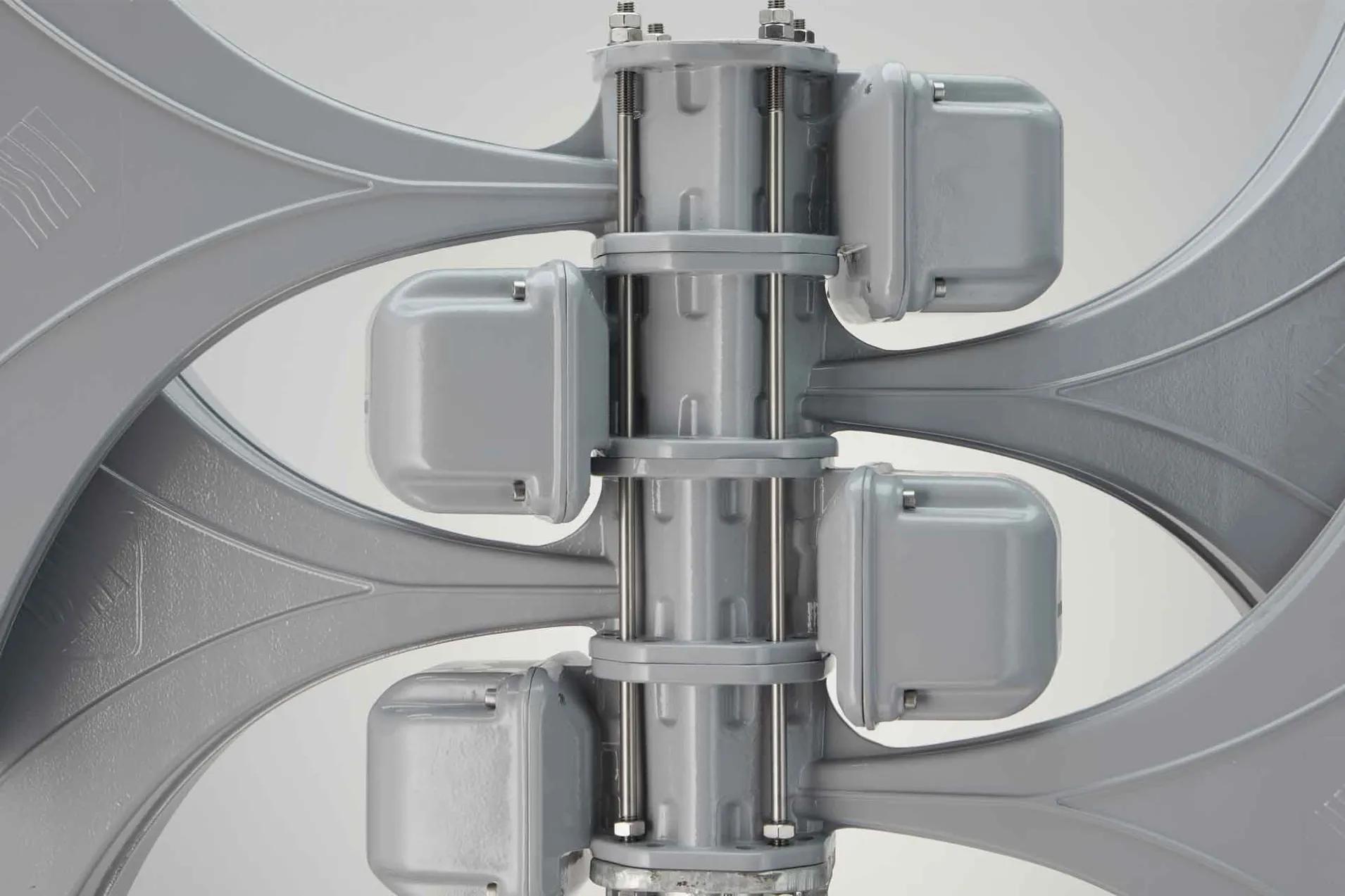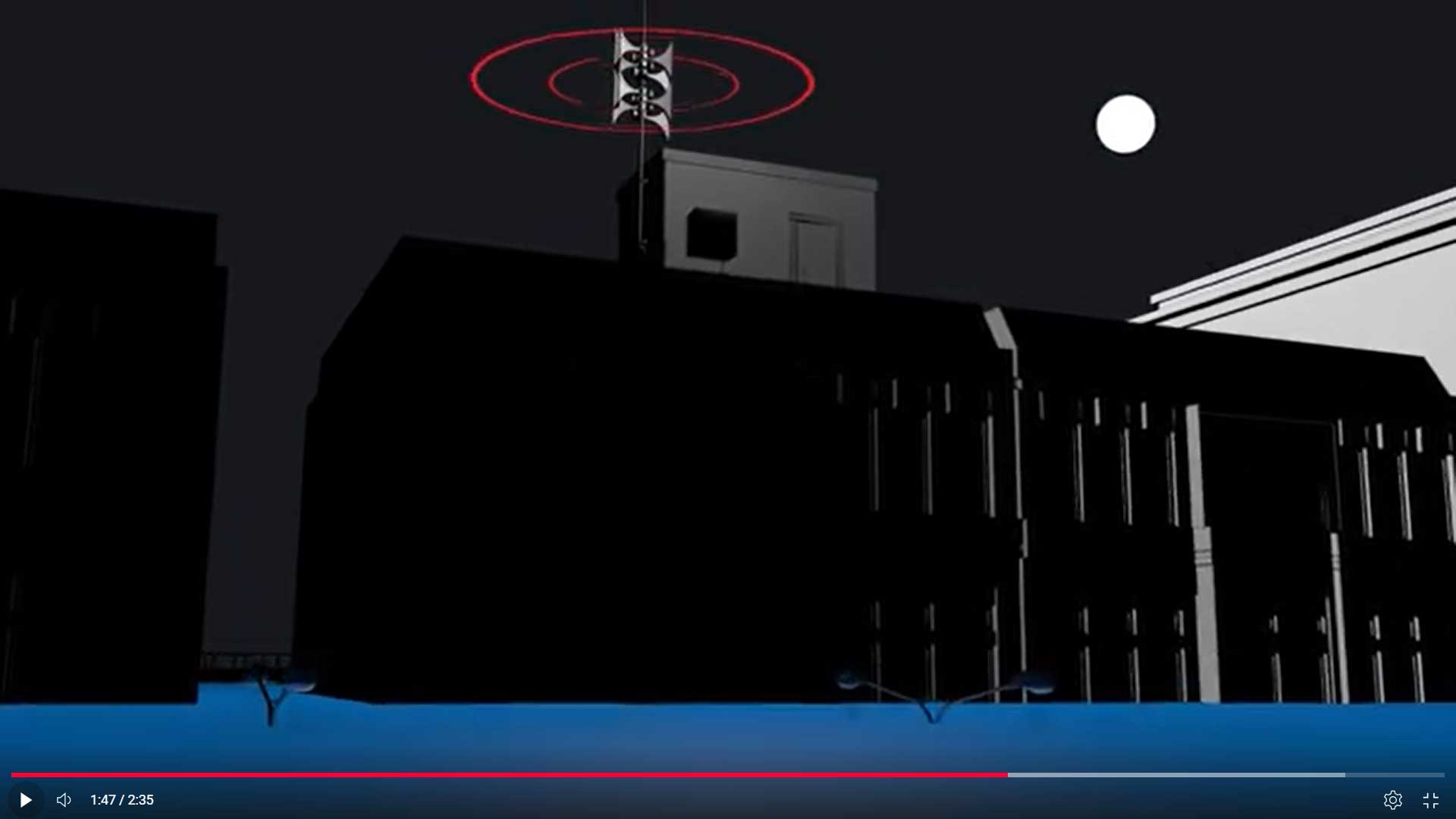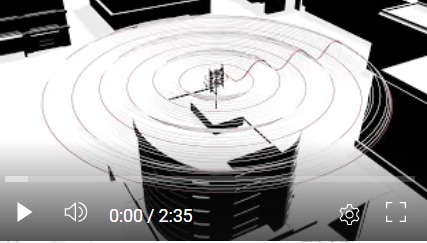
FAQ
In this section you will find questions and answers on the subject of warning and alerting with sirens.
If your question is not listed here, or if you require further information, we will be happy to help you personally. You can reach us under Contact.
General questions about sirens
How does an electronic siren work
What are the five most distinguishing features of electronic sirens?
- Operation with rechargeable batteries, therefore independent of mains voltage
- Large ranges can be achieved
- Voice announcements are possible
- No moving parts, therefore very low-maintenance
- Very good level of efficiency (electrical output/acoustic volume)
Why batteries make electronic sirens the most reliable warningsystem

Why batteries make electronic sirens to the most reliable warning system describes this video.
What sound propagation options do electronic sirens offer?
- Omni-directional (360°) sound propagation for standard assembly of the horns
- Directed mounting of the horns means the sound will carry in this direction.
What is the sound pressure level?
The sound pressure level (SPL) is a logarithmic figure stated in decibels [dB] to describe the intensity of the sound. As the SPL is a technical figure, correlations to the perceived volume is only possible in part. To quantify the perceived volume, assessed sound pressure levels (A,B and C) are used. The A-assessment - dB(A), which is the most similar to the frequency response of the human ear, is therefore generally used for stating the SPL.
When the sound pressure level is raised by 10 dB, this is subjectively perceived as a doubling of the volume.
What signals can be generated with an electronic siren?
The alarm signals of the electronic sirens are generated by an electronic signal generator. These signals are transmitted via a pressure chamber loudspeaker in the siren horns. Theoretically it is possible to generate almost any signal tone and to transmit this via the sirens. The selection of the correct warning signal however is a decisive factor in a siren warning system.
How effective are voice announcements with electronic sirens?
One of the decisive advantages of the electronic sirens is the option that allows voice announcements to be made. As voice messages, stored or live, have a wider frequency range than siren signals, these can only be transmitted at a low volume. The audible range of a voice message is therefore usually lower than a siren signal.
What communication medium is used for a siren system?
With the spread of digital radio networks such as TETRA and DMR, these standards are increasingly replacing the classic analogue data radio.
In addition to a dedicated radio connection, control via a dedicated line is another widespread method. Furthermore, communication channels such as LAN, mobile radio or satellite are possible. Of course, the individual media can also be combined to increase the reliability of a system or to safely reach sirens in poorly connected areas.
Are sirens needed at all nowadays?
Natural disasters are becoming more frequent and political uncertainty is also increasing worldwide. It has been shown in the past that sirens can reliably warn people of impending danger. Even in times when almost everyone uses the Internet and has a cell phone, there is no certainty of being reachable at all times and in all places. The alarm of an electronic siren is unambiguous. Digital electronic sirens, with their alarm function, are therefore the first means in the warning chain.
Countries whose coasts are threatened by tsunamis, earthquakes or flooding, for example, have often relied on sirens for years. As a result of the changed danger situation, the importance of the siren is also increasing significantly again in Germany. Siren networks are once again being modernized, expanded and rebuilt. The importance of the electronic outdoor siren issue is also reflected in the federal government's funding program, which has earmarked 80 million euros for the expansion of Germany's siren network. This sum is often supplemented by additional funding pots from the federal states.
Are electronic sirens quieter than the old electro-mechanical sirens?
Especially when an old electro-mechanical siren is replaced on site with an electronic siren, it is not uncommon for some people to think that the new system is quieter than before. But this is not the case. Electronic sirens such as the ECN or ECI models are even louder than an E57, for example. The only difference is the sound characteristic.
Comparison of the sound characteristics of electro-mechanical sirens and electronic sirens
With an electro-mechanical siren, the sound first catches in the siren canopy, i.e. under the curved bonnet, and then spreads directly downwards (vertically) towards the ground. This has the effect that the siren is perceived as very loud in the immediate area, e.g. at the fire station on whose roof it is installed.
With the electronic siren, on the other hand, the horns are designed and arranged as sound emitters in such a way that the sound spreads primarily horizontally and only falls exponentially towards the ground from a radius of approx. 30 m. This means that people who are in the immediate vicinity of the siren will perceive it as very loud. People who are in the immediate vicinity of the siren therefore initially perceive the sound as not being as loud compared to the conventional motor siren.
The difference is therefore that the electronic siren achieves a higher sound range. This means that fewer sirens are needed to cover a given area. The positive side effect is also that people who are directly below an electronic siren are no longer exposed to a potential risk of hearing damage.
The following figures can be used to substantiate this:
Maximum sound pressure level at 1 m distance:
E 57 130.50 dB(A)/1 m
ECI 600-DT 138.50 dB(A)/1 m
ECI 1200-DT 144.50 dB(A)/1 m
Average sound pressure level at 30 m distance from siren (in built-up area)
E 57 101 dB(A)/1 m
ECI 600-DT 109 dB(A)/30 m
ECI 1200-DT 115 dB(A)/30 m
Average sound range (in built-up area)
E 57 approx. 450 m
ECI 600-DT approx. 550 m
ECI 1200-DT approx. 650 m
Here, 65-70 dB(A) is generally assumed to be the limit at which the average human ear can just perceive the siren signal, provided it is not drowned out by direct ambient noise, e.g. a passing truck.
Conclusion:
Especially when an old electro-mechanical siren is replaced on the spot with an electronic siren, it is not uncommon for some people to feel that the new system is now quieter than before.
Of course, it is also the sound of the electronic siren that differs from that of an electro-mechanical siren. The reason for this is that the wailing sound of an E57 is produced mechanically and that of an electronic siren is digitally modelled on it. However, the points listed clearly show that one must not be misled here.
Technical information about sirens
What is the acoustic output of the electronic siren?
The ECN electronic sirens are available in various output classes. They have a characteristic sound output of 109 dB(A), 115 dB(A), 118 dB(A), 121 dB(A), 123 dB(A) in 30 metres distance. When the sound output is higher, this usually means that greater ranges can be achieved taking the surrounding conditions and environmental influences into account.
What audible ranges can be achieved with a siren?
The audible range of a siren depends on many influencing factors and cannot be calculated generally. A siren with a higher sound output always achieves a greater range than a type with less output power.
Decisive for the range is the height and type of the assembly site and the geography of the surroundings.
How is omni-directional sound propagation possible with an electronic siren?
The ideal arrangement of the siren horns is when they stand at 180° to each other. The diffraction at the gap of the siren horns ensures omni-directional 360° sound propagation. This physical mechanism ensures that the sound also enters the acoustic shadow. From a physical point of view, the diffraction of the sound waves can be explained using the Van Huygen principle.
The horns of the ECN sirens were developed in consideration of physical laws and were subjected to extensive testing so that an optimum sound propagation is guaranteed.
What power supply is required for an electronic siren?
Our electronic sirens are supplied as standard with a power supply of 230V/50Hz. Optionally, there are solutions for 110V/60Hz available.
How much electricity does an electronic siren consume?
When triggering a siren alarm, the required power needed to operate the amplifier is supplied by the batteries. The batteries are charged via the mains supply 230V (or 110V). The output consumption of an ECN siren is approx. 10 watt in standby mode, whilst the re-charging process of the batteries requires 150 Watt from the mains supply.
